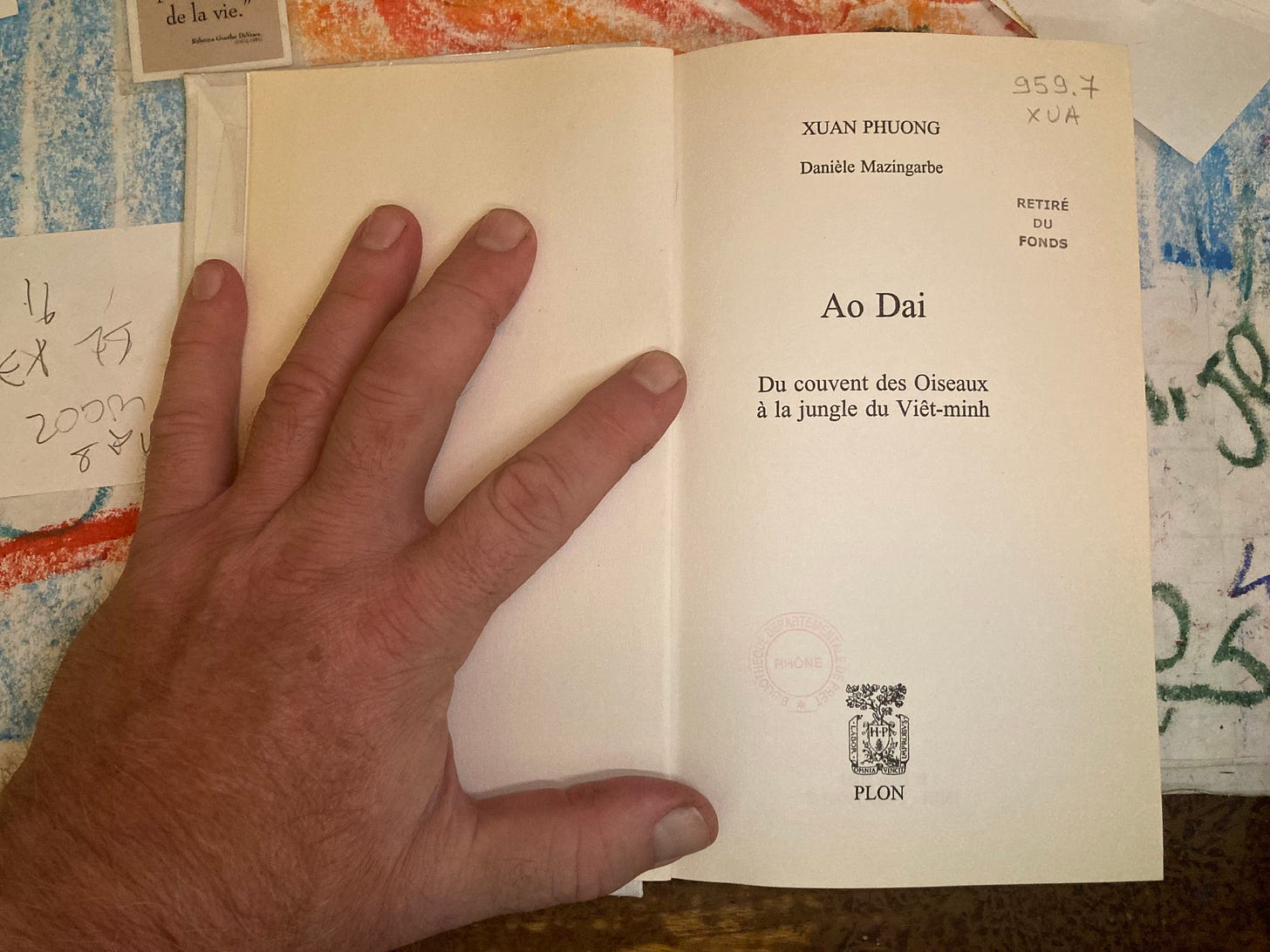Ao Dai: Du couvent des Oiseaux à la jungle du Viêt-minh (ii)
from revolutionary Xuan Phuong, journalist Danièle Mazingarbe, and Plon
18 chapters if you count the Prologue. I do. It is not an Introduction by an eminent person or a Preface explaining method.
The anthropologist Margaret Bodemer has conjectured from Hawaii that the method of the entire book is that one author, Xuan Phuong, dictated these chapters to the other, Danièle Mazingarbe. One woman schooled in French language dictating to another is a pleasant thought,
since dictation is the way we learn to spell that language by its sense as well as its sound. The idea of dictation also stresses Xuan Huong’s recollection as the subject of her own life rather than as a research subject of Danièle Mazingarbe’s interviews.
Both women bear names found in metropolitan France - Paris - and at the far reaches of the nation. Mazingarbe is a Belgian name, like her publisher Plon, and the name Xuan Huong is as representative of Indochine as the title of their book together, Ao Dai.
I glanced at the Prologue - I have not yet read the book - and found that it plunges into the midst of things, as do the Homer poems and the Aeneid, in medias res. Xuan Huong, in her ao dai, is crossing a river on March 10, 1946,
from her childhood in the aristocracy into the revolution. Her Prologue then looks ahead to what is to come. The next chapter, Ten Girls Aren’t Worth One Boy, steps back to her birth then the remainder proceed in order by date of events with each building on what has come before.
The book is orderly in that sense, while chatty and lifelike in another. The 18 chapters in 248 pages of text average out to an ideal arithmetic mean of nearly 13 and 1 half pages. The mode, the most common actual length, is 8 pages.
The median length, with half the other chapters shorter and half longer, is 9 pages. There are 2 of those. While the mean, median, and mode all lie within a span of 5, the overall distribution is extreme, from 2 pages, less than 1 per cent of the total, to 48 pages, nearly 20 per cent.
The 4 longest chapters skew hard right, adding up to 2 fifths of the total book, and appear together in sequence at the middle of the book at the eighth, ninth, ten, and eleventh positions of the 18 chapters. They concern the armed revolution against France, the final battle at Dien Bien Phu,
the social revolution within the new Viet Nam, and life on the ground under the air war by the United States. By the table of contents, those are the meat of Xuan Huong and Danièle Mazingarbe’s book.
This was the first Viet Nam letter of 2 so far on Ao Dai: Du couvent des Oiseaux à la jungle du Viêt-minh by Xuan Phuong and Danièle Mazingarbe. The first posted on April 20, 2023.
Viet Nam letters respects the property of others under paragraph 107 of United States Code Title 17. If we asked for permission it wouldn’t be criticism. We explain our fair use at length in the letter of September 12, 2022.
The colophon of these Viet Nam letters, directly above, shows the janitor speaking with poet David A. Willson on a Veterans Day.









